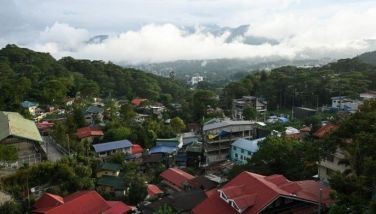Food feeds consciousness
CEBU, Philippines - "May kakaibang amoy kaya di ako kumain (There's a kind of smell to it so I didn't partake)," whispers Marissa Camrita, a photography hobbyist from Quezon Province.
"Aling food po yon Ma'm (which food was it Ma'm)?" I inquired in the hope of making an immediate feedback to the organizer as there might really be something wrong with the food choice offered her during our Aloguinsan stop in the Explore the Midwest edition of the June 11-12 Suroy Suroy Sugbo.
"Yung snacks sa Alodome," was the soft reply.
"Ay! Talagang may amoy yun Ma'm," I said in a manner that would open her fancy to one of the poor Cebuano's comfort food. "We call that tinabal. You call that buro."
***
The food trip in the recent Suroy Suroy Sugbo (which some relabeled in jest as Kaon Kaon Sugbo because there's always something to munch on every 20 minutes) is a platform to learn and unlearn our concept of good food. It is a fitting spot to embrace or reject our perspective of what's appetizing.
The foodies worship this event. The towns and cities are awash with dishes and delicacies in preparations out to show off the best of heritage cuisine. And yes, there are some who turn to the caterers who can present the perfect humba (stewed pork hock) and best garnishing that would make every food critic praise high heavens.
Aloguinsan is a rich stop for food-trippers. Those who grew up to eating tinanok nga kamote (boiled sweet potatoes) dipped in ginamos (salted bulinaw or dilis) and tinabal (brined fish, preferably mulmol or parrotfish) love the plate fare. And there's the bibingka that uses kinugay or muscovado sugar. It's richly brown in color and a little overcooked on top because most of us love it the burnt way. We call that "pinapaig" (scorched).
Tuburan continues to wow the Suroy participants with its varied product developments using sweet potato. There's camote valenciana, camote doughnut, camote-nut pudding. This is being shared by Toledo with its cassube (cassava ube) aside from the puto lancho (glutinous rice, sugar and grated young coconut) it is most identified with.
Back to Mrs. Camrita who was checking on how we label food stuff --- whether it should be longanisa or langgonisa --- it dawned on me that tourists consume much more than established foods. When we are about to sink our teeth on something, we consume with it our cravings and our senses - the desire to find meaning on our varied chow patterns, as dictated by culture.
Drink in the foul smell and imagine the fishermen who toiled out on Tañon Strait to bring in a school of parrot fish about to be fermented in recycled huge cooking oil cans. We call that "taro" (no, not the root crop but the tin cans). Picture out a family of five to seven sharing the fish, brined on purpose to last a lifetime as the storm surge prevents father from venturing out to sea in the next couple of days. He has to till the farm for payaw or paw (of the gabi family), corn and sweet potatoes as alternative to the ever-increasing price of rice. Anyway, saksak or sinanduloy (corn grits with cubed sweet potatoes) as was offered in Tabuelan offers a more satisfying fill.
There could be no tinabal without that stench. And that stench makes every balikbayan-participant nostalgic of his/her humble days - that moment he/she dreamt of earning dollars to pay off his/her fisher-slash-farmer father's debt so tinabal would not be a main dish forever.
Now, it makes the rush to the table more meaningful. One who returns home after a backbreaking journey out of the country finds reason to thank all over again the goodness of the sea, and of course, that very moment given to taste that familiar food again - part and parcel of all our early struggles.
- Latest
- Trending





























